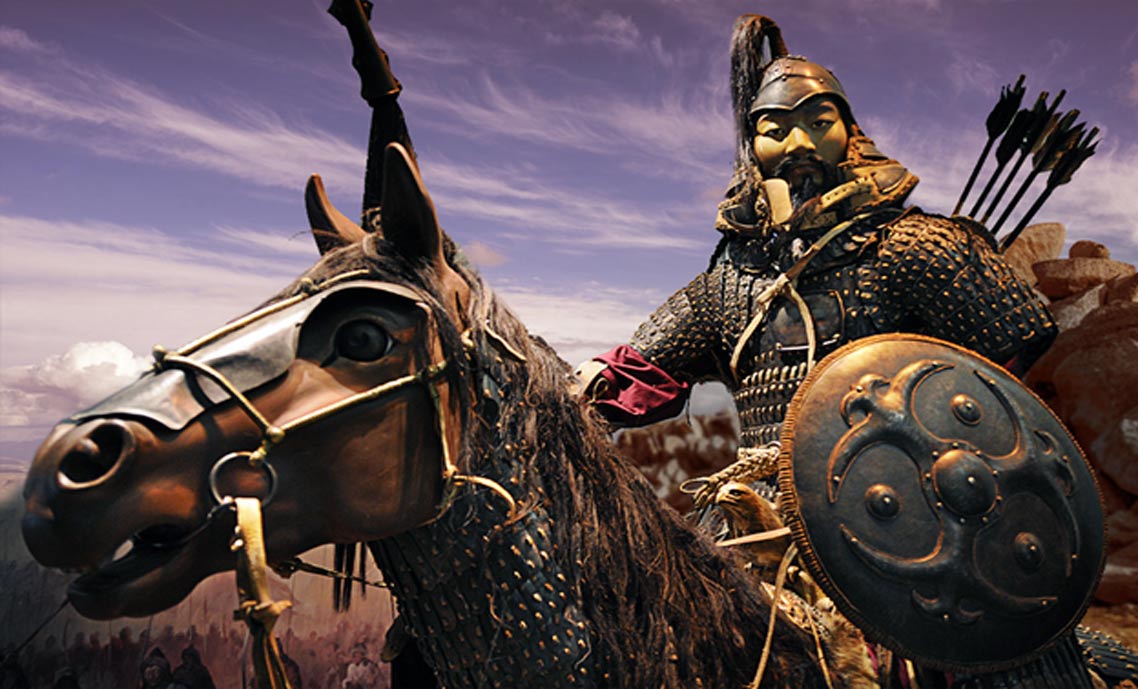
Subutai: Dog of War - Sophisticated Military Strategist Behind Genghis Khan’s Conquering Empire - Part I
There have been many renowned and infamous conquerors and generals such as Sargon of Akkad, Tiglath-Pileser III of Assyria, Cyrus the Great of Persia, Alexander the Great of Macedonia, Hannibal of Carthage, Julius Caesar of Rome, Attila the Hun, and Tamerlane, to name a few throughout history. Every one of them has rightfully earned a spot in the history books as a brilliant strategic tactical genius or an uncompromising, bloodthirsty sociopath. However, for some, names and actions have gone largely unnoticed through the annals of history. One such man of great influence but little renown, went by the name of Subutai.
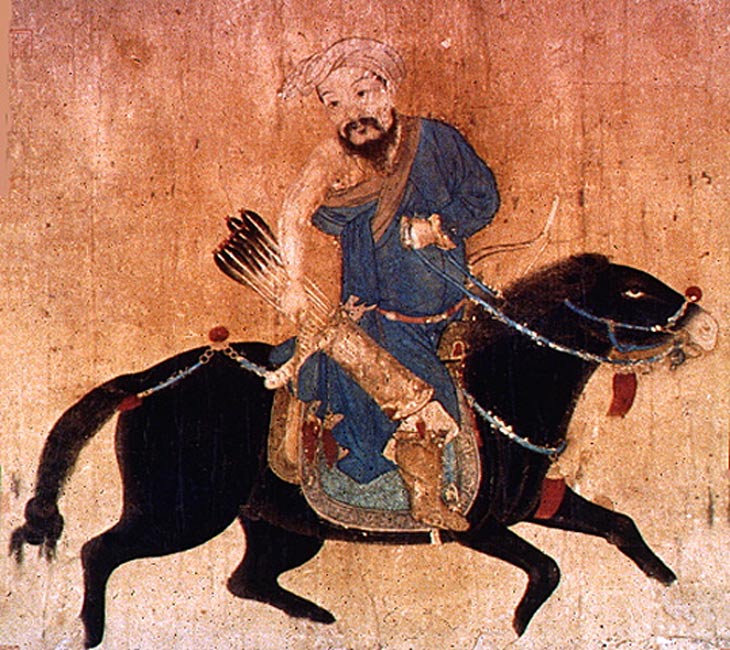
Drawing of a mobile Mongol soldier with bow and arrow wearing deel, traditional clothing. (Public Domain)
The Powerful Mongol Army
The Mongols were a steppe people who lived mostly to the north of China. They were a conglomeration of various clans and tribes that were not united but rather a loose confederation. Nevertheless, a Mongol by the name of Temujin united the various tribes into a single nation. Temujin would take this nation and turn it into a powerful empire. His name would also change to the name many of us know today— Genghis Khan. This name/title was given to Temujin when he united the Mongols in 1206.
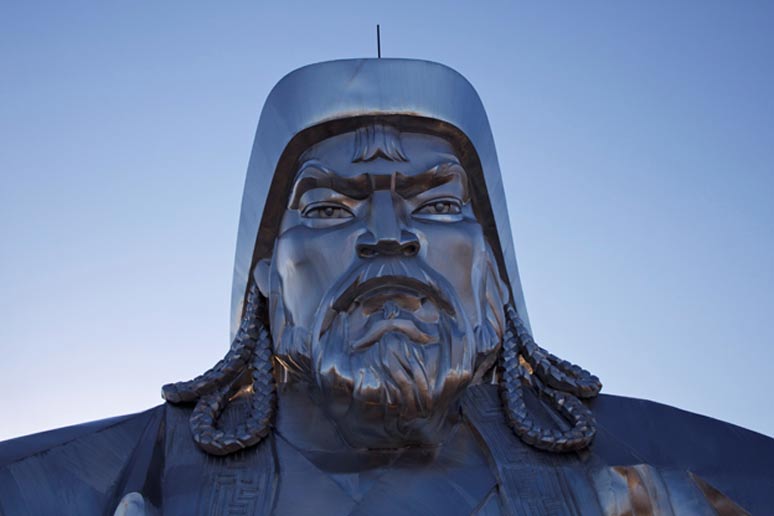
Statue of Genghis Khan (CC BY 2.0)
The Mongols were a cavalry-based system comprised of heavy and light elements. Mongol forces were assembled into arbans, jagun, minghans, and finally tuman. Arbans consisted of seven to 10 troops, jagun consisted of 100 troops while the minghan consisted on 1,000 troops.
10 units of 1,000 troops made one tuman. A tuman was 10,000 troops the second to largest unit in the Mongol army. The largest was three tuman, which would equal 30,000 troops and thus formed an army.
Shock and Awe
Mongol tactics were pure and simple; play a game of cat and mouse and finally when the time is right, switch roles with the enemy.
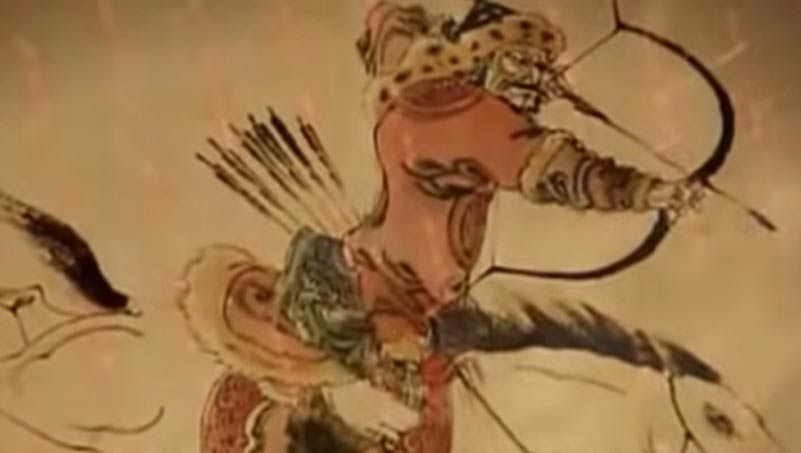
Mongol warrior on horseback, preparing a mounted archery shot. (CC BY-SA 4.0)
Mongols were masters of deception and ambushing. As for Mongol arms, their primary weapon was the bow. The Mongol bow was larger than normal for a composite bow, but had a pull weight of up to 165 pounds and a range of 350 yards (320 meters). In addition, they also carried a large number of arrows of various types to accompany their bow. The mixture of arrows was due to the types of combat they might encounter, whether close or far range, or for single combat, and psychological combat. Either way, the Mongol arrow system was indeed unique among others.
As for body armor, light Mongol cavalrymen wore padded armor in thick leather, but nothing heavy, while heavy cavalrymen wore leather with metal plates attached, including a metal helmet. His horse was also covered in strong armor. The cavalrymen also carried either a long, 12-foot (3.6 meter) lance, battle-axe, or curved or straight sword.
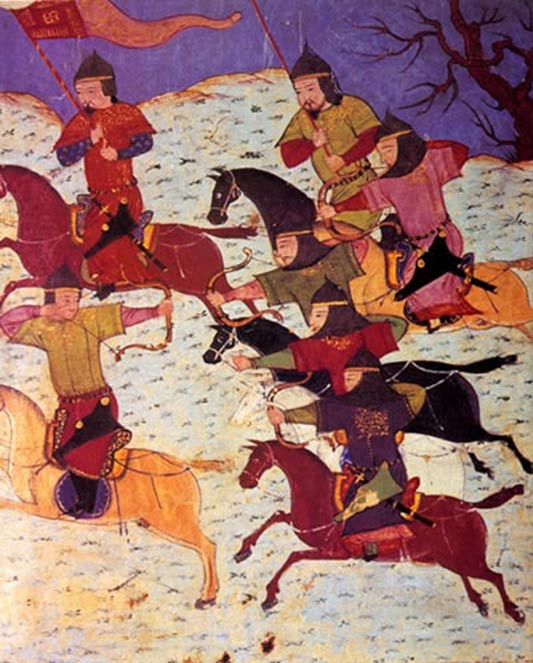
Mongol cavalry archery from using the Mongol bow. (Public Domain)
The Mongol mix of light and heavy cavalry employing various weapon systems produced a shock-and-awe combination. Missile cavalry provided the shock, while heavy cavalry provided the awe. Overall, the Mongols were all about blitzing; enveloping and swarming the enemy—but only when the enemy showed itself vulnerable.
Subutai, from Humble Beginnings
Subutai, or Subotai “Bagatur” (the Valiant), may have been born sometime around 1176/77 AD. We only know this for it is said that he left home at the age of 14 to join Genghis Khan’s army in 1190 AD. Others suggest that maybe he was born either in 1172 or 1175 AD.
Subutai was the son of a blacksmith who lived in the forest around the western edge of Lake Baikai. He came from a tribe that was not considered Mongol, known as the Uriangkhai tribe. The Uriangkhai were a people who preferred to live in the forest within their mud or wood huts. They were not horsemen and their trade was fur, and they specialized in blacksmithing. Nevertheless, they offered their services to the Mongols, season permitting, to fix anything broken such as weapons, pots, or pans. Subutai most likely encountered the Mongols in his early years while helping his father to fix whatever needed repair. Because of this encounter, Subutai grew to understand them and their way of life by the season-to-season interaction with them.
In 1190 AD, Subutai left home to join the Mongol armies under Genghis Khan. He was just fourteen years old, but he had youth and energy, and the stories he’d heard from his brother Jelme, who rode with Khan, excited the boy. He was very young for a person looking for combat, but his older brother Jelme vouched for him to Genghis and Genghis agreed—but his job was door attendant to the Khan. In other words, Subutai made sure the felt flap kept cool steppe air out and the Khan’s warm words in. But it was also here at the door that Subutai began to learn the Mongol art of war.
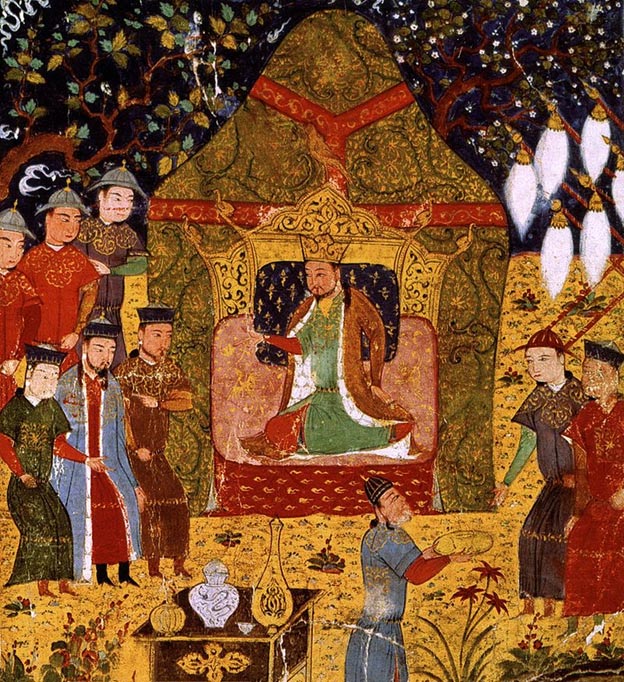
Genghis Khan seated in the center in tent and his attendants, sons, and generals surrounding. (Public Domain)
Subutai, as far as we know, knew nothing of horsemanship. In the eyes of the Mongols he was a mere amateur. Now, besides his duty of guarding the Khan’s doorway, he was duty-bound to a Mongol officer who was in charge of him. Subutai had to learn how to ride a horse. It was felt that any man could ride a horse, but to ride a horse into combat with command precision was a far different mastery, especially when learning to use the bow. Subutai went on to learn how to master the horse and bow. His skills grew, including absorbing strategy and tactics he learned at the Khan’s doorway, and after some years went by, Subotai went from doorkeeper to Khan’s inner circle, discussing the military issues he once overheard.
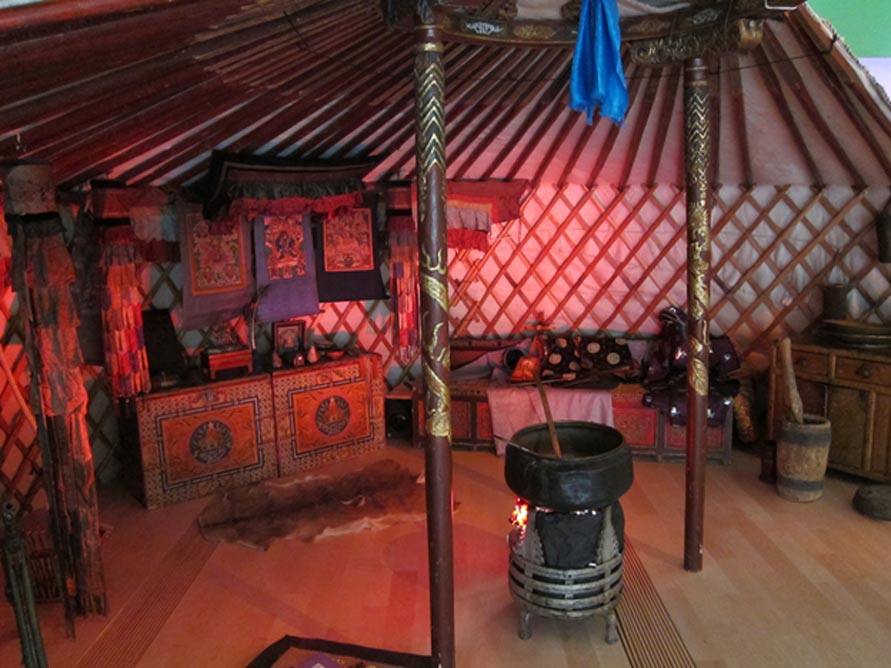
The recreated interior of an ancient Mongolian ger (also known as a yurt), from Genghis Khan: The Exhibition. (CC BY-SA 2.0)
The Desperate and Blind Merkits (1197)
Subutai’s first battle came in the year 1197 AD. Genghis offered Subutai a hundred of his finest warriors for the operation against the rival Merkit tribe who had a camp set up that the Khan wished to attack. Instead, Subutai went by himself to the Merkit camp and told them that he had deserted Genghis. The Merkits believed Subutai and made him one of their own. They wanted to know where Genghis forces were and Subutai assured them they are far off. However, this was not true, once the Merkits let their guard and suspicion down, the Mongols attacked. This convincing ruse would become the staple of Subutai’s tactics: that is, to attack the enemy indirectly by whatever means available and necessary.
Subutai understood the situation well, for the Merkits had set up camp and were blind to what was going on around them. Subutai quenched their thirst for knowledge by poisoning their wells of thought. Subutai seemed to know that desperate men like the Merkits would believe in anything thrown their way, just like a man in need of water only to discover a deceptive mirage in front of him.
Breeching the Wall of the Jin (1211)
In March 1211, Genghis Khan had assembled a very large fighting force fixed for conquest. Their goal was to take over the Jin Empire, but an obstacle lay in the way and that obstacle was the Great Wall of China.
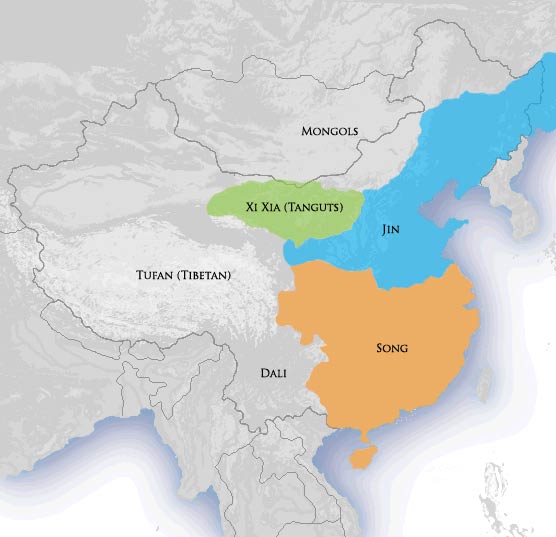
Location of Jin dynasty, 1115–1234 (CC BY 3.0)
Word reached the Jin officials that the Mongols were coming. Jin scouts, careful to made sure the Mongol scouts did not see them, reported a large Mongol force of 30,000 led by Subutai. The force was making its way towards eastern end of the Great Wall. By taking this route, one arrives close to the Jin capital having once crossed.
The Jin quickly sent men to reinforce the wall along with secondary defenses, but the attack never came. Subutai and his 30,000 men were nowhere.
Instead, another report surfaced that Genghis Khan was leading a much larger Mongol army towards the western edge of the Great Wall. Garrisoning the western edge of the wall was a people known as the Onguts; the Onguts were Mongols who had been defeated by the Jin earlier and been placed under their command. However, the Onguts were not going to fight when they saw their kin arrive, for Genghis and his Mongols were looking to attack and vanquish the Jin Empire who conquered their very tribe.
Because of the absence of Subutai, the Jin forces had to hurry, for the main Mongol army was well on its way. Genghis learned that the Jin forces were responding, but very slowly; this gave Genghis time to choose the battle site, which was the northern passes in what is now Shanxi province.
Once the Jin arrived they saw the Mongols and quickly assembled themselves into battle formations. The Jin used a typical battle formation that is also used in the west as it was in the east and that was: infantry front and center, cavalry to the sides.
The Mongols were all cavalry, both light and heavy, built for speed and terror. The Mongols made the first move by sending in their horse archers, showering the Jin infantry with armor piercing arrows, and then sending in their heavy cavalry to break the enemy ranks, causing panic and desertion. In the meantime, the Jin cavalry could do little, for they were far heavier and less agile when compared to the Mongol heavy horse. However, the battle was far from over as both armies traded blow for blow until Subutai arrived. No one knows how Subutai did this and what route he took, but he was able to flank the Jin cavalry and attack their rear forces, and as such the Mongols completely collapsed the Jin army on all sides causing a bloody mess.
Deception played a large part in the battle, once again. In fact, the battle contained two deceptions: the first being the report of Subutai’s army approaching the edge of the eastern wall, and the second deception was allowing the enemy to dismiss or forget about Subutai.
Whoever orchestrated this maneuver is unknown, but I would not doubt that it was between Genghis and Subutai, if not Subutai alone. However, the Jin army broke a rule regarding the Art of War, in which Sun Tzu says, “One who sets the entire army in motion to chase an advantage will not attain it.” The Jin were chasing a phantom, only to be conquered by it when they looked away.
Battle of Kalka River (1222/1223?)
In 1222, Jebe, a prominent general of Gehghis Khan, and Subutai took a route that led through a pass called Derbent, on the Caspian Sea in Russia. As the Mongols were riding through, various nomadic tribes such as the Alans, Cherkesses, Lezgians and Cumans were uniting as one against the Mongols who were largely unknown to these alarmed groups. After the nomadic alliance united, a battle soon followed between the nomadic coalition and the Mongols. The results of the battle remain unknown, for some suggest there is not enough evidence to support victory for either side.
Jebe and Subutai licked their wounds and pushed back at the Alans, soundly defeating them. The Mongol armies next attacked the Cumans and defeated them, chasing them to the Crimea. The Cuman khan, named Kotian, was the father-in-law of Prince Mstislav of Galich. Kotian along with Mstislav sent out a call to unite the various Russian principalities to fight off the Mongol invasion. All involved in this operation were against the Mongols, but knew nothing about them, their way of life, language, or what god they worshipped—all they knew is that this army was strange and serious.
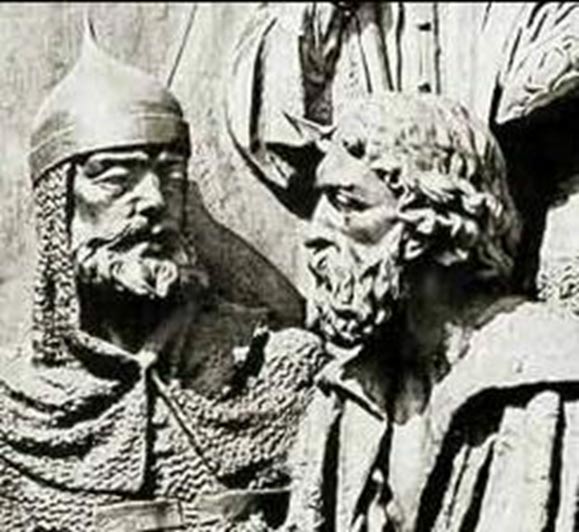
Detail from the Millennium of Russia Monument: Mstislav Mstislavich, left, and Daniel of Galicia, his son-in-law. (CC BY-SA 3.0)
The Mongols soon realized that the Cumans had gained Russian support. Jebe and Subutai wanted nothing to do with the various Russian forces. Therefore, they sent ten ambassadors in to parlay and none came out alive. The subsequent message from the Mongols to the Russians was simple: go home, this is not your fight. The Mongols showed no interest in Russian lands, but had issue with the Cumans. However, as you have read, the Russians had every intention of defending the Cumans. Jebe and Subotai saw the Russian and Cuman forces and decided to retreat.
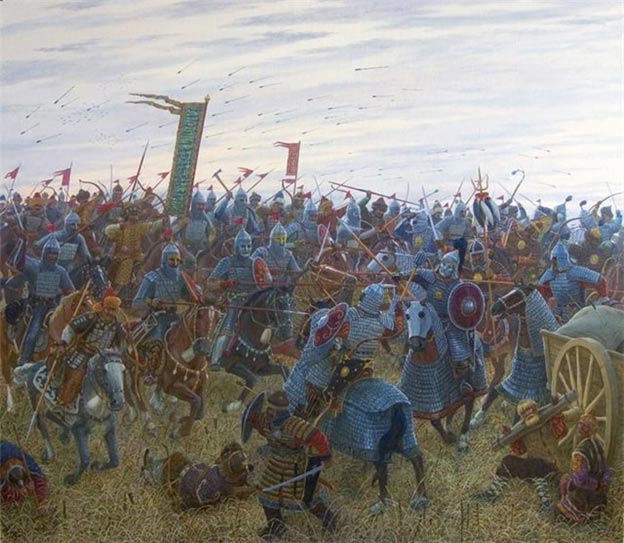
Battle of Kernek was between Volga Bulgaria and the Mongols, 1223. Representational image. (Public Domain)
The Mongols fell back from the Russian and Cuman forces for nine days before the Mongols sent ambassadors to the Russians. These ambassadors brought the same message as the previous, but the Russians sent them back with a message that they would only be happy once the Mongols returned to their own land and were out of sight. This reasoning is also understandable, who is to say that once the Cumans were defeated, the Mongols will not set their sights on Russia?
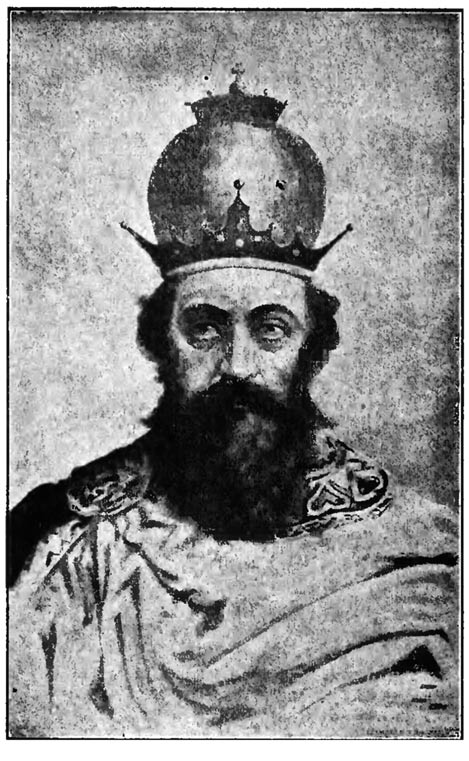
Daniel of Galicia: King of Galicia and Volhynia (King of Rus') (Public Domain)
The first battle between the two resulted in a victory for the Russians, as they soundly attacked the rear guard and defeated the Mongols. Once this was accomplished, the Russian Prince Mstislav of Galich, along with the Cumans, crossed the little Kalka River. Prince Mstislav made a terrible mistake for not communicating his intensions and falling right into a Mongol trap. The main Russian army under the Prince of Kiev were a distances always from Prince Mstislav and if something were to go wrong, they could not help them.
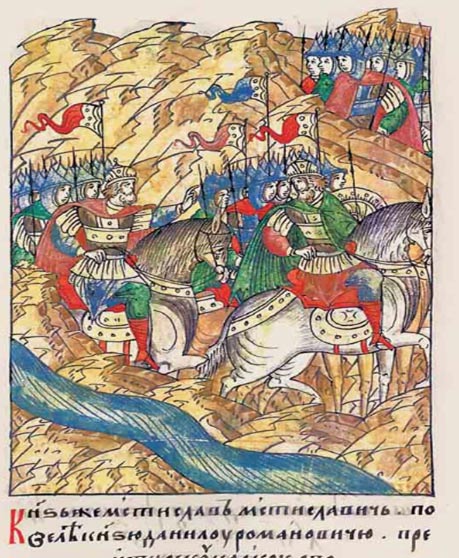
Daniil Romanovich and Mstislav Mstislavich (Daniel of Galicia and Mstislav of Galich) with their troops. (Public Domain)
Jebe and Subotai took advantage of the situation; their retreat had paid off. The Russians split, and Prince Mstislav, along with the Cumans, became too confident. The Mongols quickly enveloped the enemy causing the Cumans to panic and Prince Mstislav of Galich to retreat home. The Mongols followed through by attacking the main Russian force, causing them to retreat to a hilltop where they tried to prepare defenses against the Mongols, but Prince Mstislav of Kiev could not, and after three days of fight, surrendered. He asked if he and his forces could return to Kiev, but Jebe and Subotai had a better idea.
Instead of letting them go, they killed the prisoners and built wooden planks to cover Prince Mstislav as they dined on top of him, hearing him scream, as the weight of the party slowly crushed him.
Jebe and Subutai then pursued the Prince Mstislav of Galich, but with no real gain. The Mongols did plunder some towns, but Mstislav of Galich had every boat burned in order to hinder the Mongols’ movement.
Jebe and Subutai finally relented, and return back home to prepare for the future – an ambitious and dangerous future which would lead to Genghis Khan naming Subutai one of his fierce ‘dogs of war’.
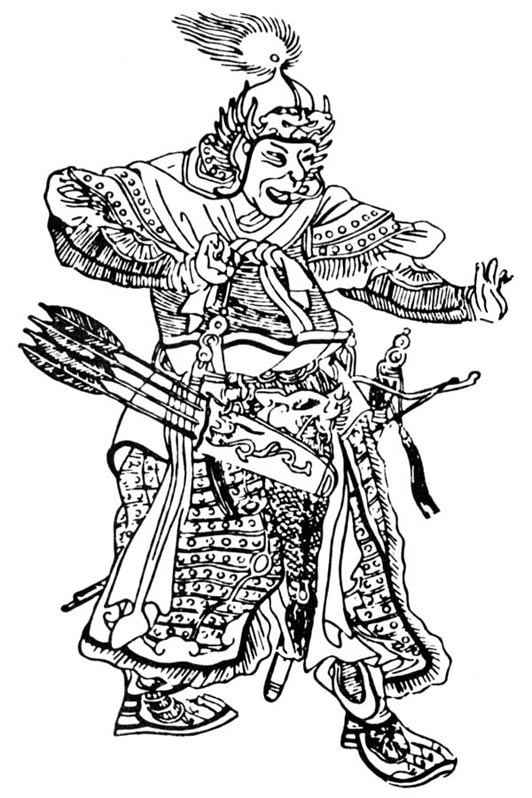
Subutai. Medieval Chinese drawing. (Public Domain)
(Read Subutai: Dog of War — Silent, Insatiable and Remorseless, Part II)
Featured image: A Mongolian Cavalry recreation, from Genghis Khan: The Exhibition (CC BY-SA 2.0)
References
Bevin, Alexander. How great generals win. New York: W.W. Norton & Company, 2002.
Carey, Brian Todd, Allfree, Joshua B and Cairns John. Warfare in the Medieval World. Barnsley, UK: Pen and Sword, 2009.
Chambers, James. The Devil's Horsemen: The Mongol Invasion of Europe. Edison, NJ: Castle Books, 2003.
Craughwell, Thomas J. The Rise and Fall of the Second Largest Empire in the World: How 88 Years of Mongol Domination Reshaped the World from the Pacific to the Mediterranean Sea. . Gloucester, Maine: Fair Winds Press, 2010.
Crompton, Samuel Willard. 100 Military Leaders Who Shaped World History. San Mateo, CA: Bluewood Books, 1999.
Cummins, Joseph. History's Great Untold Stories: The Larger Than Life Characters and Dramatic Events That Changed the World. Washington DC: National Geographic, 2007.
Curtin, Jeremiah. The Mongols A History. Boston: DA CAPO PRESS, 2003.
Dupuy, Trevor N. Johnson, Curt. Bongard, David L. The Harper Encyclopedia of Military Biography. New York: Castle Books, 1995.
Edwards, Sean J. Swarming on the Battlefield" Past, Present, and Future. Santa Monica: Rand Coporation, 2000.
Gabriel, Richard A. Subotai the Valiant: Genghis Khan's Greatest General. Westport, Conn: Praeger, 2004.
Hart, B. H. Liddell. Great Captains Unveiled. New York and Washington D.C.: Da Capo Press, 1996.
Hartog, Leo De. Genghis Khan: Conqueror of the World. London, New York: Tauris Parke Paperbacks, 2004.
Kennedy, Hugh. Mongols, Huns & Vikings. London: Cassell, 2002.
Turnbull, Stephen. Genghis Khan & the Mongol Conquests 1190-1400. Oxford: Osprey Publishing, 2001.
Tzu, Sun, Griffith, B. Samuel (translator). The Art Of War. London: Oxford University Press, 1963.